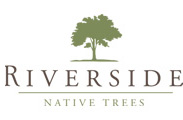
Dear Customers;
For over 20 years Riverside Native Trees and Nursery has enjoyed growing trees and working with people passionate about native plants. All good things come to an end however and this is our time to leave the native tree and shrub business. We're blessed to have two grandkids with another on the way and we want to spend as much time as possible with them.
While we still continue to operate riversidenativeperennials.com we are also working with people interested in starting their own native tree and shrub business. Their nursery stock can be obtained by emailing us at the address below. If you're reading this and think you might be interested in more information about growing native plants as a side hustle or a business, please email me and we can begin a discussion. The website Riverside Native Trees is for sale as well as some used irrigation equipment, 3 gallon pots, and other material, still in great shape, needed for growing.
Please contact us for more information: ekapraly@gmail.com